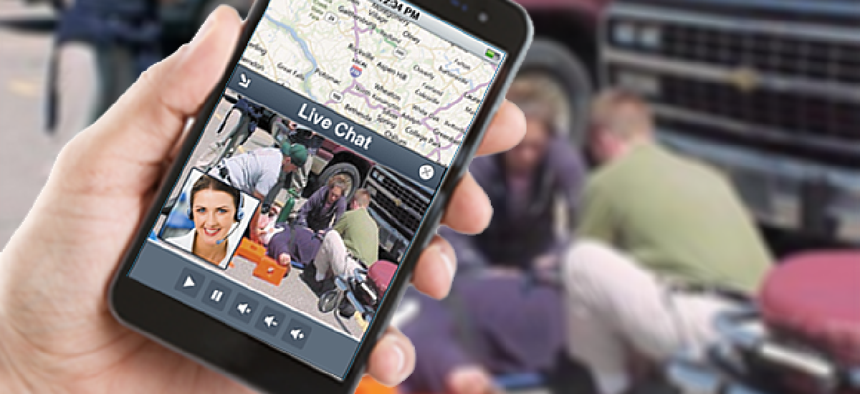Campus police test safety app with two-way, multimedia comm


Connecting state and local government leaders
Campus police at the University of Maryland, Baltimore County, are testing a technology platform that integrates multimedia with real-time geo-technologies accompanied by machine learning and mobile-to-mobile security.
Campus police at the University of Maryland, Baltimore County, are testing a new technology that allows them to instantly communicate with multiple users via audio, video and text messages as well as geolocation functions over any device or platform.
The technology, developed by beamSmart, a startup based in Tysons Corner, Va., delivers dynamic, multilayered content that enhances the safety and response of emergency personnel before, during and after mission-critical or 911 situations, company executives said.
Latency is less than one second and the cloud-friendly technology uses advanced user authentication and encryption, they added.
Bill Lane, president of beamCitizen, the public-sector division of the parent company, said the software is configurable to any platform and can work on any device. The software also enhances 911 systems by providing “a better picture” of the scope of the crisis, Lane added, with real-time information so first responders can provide the best resources for that particular situation.
UMBC Lt. John Moran said greater situational awareness is important to his officers, who sometimes head into a scene “blind.” Right now, he said a dispatcher takes as much information as possible from a caller and relays it to a responding officer.
When beamSmart is fully operational, the UMBC force -- which has about three dozen personnel including 21 patrol officers -- will be able to get live video or audio streaming from dashboard or surveillance cameras (as long as it has an IP address) texts, photos and location of an emergency situation.
Mobile data terminals and dashboard cams in the department’s patrol cars are being connected and tested.
Virtual safety and geofences
Moran said they are also testing smartphones with the system across the campus, located 10 miles southwest of Baltimore. By fall, UMBC plans to offer its 16,000-plus students, faculty and staff the option to download a smartphone app, which will provide the same ability to instantly communicate with police through two-way voice, video, and/or messaging, depending on the situation.
Users who register through the app, can also provide as much or as little information -- such as name, address, phone numbers, primary care physician, allergies and other pertinent data -- to the department.
Moran said the new technology won’t replace the 911 system, which people on campus can still call. Those calls are handled by county police dispatchers and routed to UMBC police. With beamSmart, UMBC dispatchers are able to track patrol cars in real time on a display of a campus map, enabling them to see which vehicles are located nearest to a reported incident.
While Moran said his department’s response times are quick now, the value in the system is getting real-time multimedia information they may not have gotten otherwise.
Another advantage, he said, is the ability to create multiple geofences around, within or outside the campus. If a patrol car leaves a geofenced area or even travels far above the speed limit, officials get an immediate alert. What’s more, they can trace the actual routes police cars make during a particular shift, which could help managers adjust routes if they see specific areas or streets aren’t being patrolled.
Lane said the system is intuitive and designed to be as usable as possible for people with varying degrees of technical understanding. “The hard part is making it simple,” he said.
Smarter, faster decision making
One significant feature of the technology -- which UMBC may add in the future -- is its machine learning capability, which essentially culls information from the cloud.
Machine learning, “looks at the prior information that was available and then makes judgments and predictive analysis,” said Mehrdad Negahban, beamSmart’s chief technology officer and founder.
For example, as the system digests more data and history about prior incidents within an area, it can relay information to help emergency personnel make smarter, faster decisions based on what was done before or best practices for the situation. This capability, Negahban said, could be dialed up or down, meaning in some cases the system could automatically send out messages without a human prompt.
The company recently signed a three-year memorandum of agreement with the Federal Emergency Management Agency as it looks to create a two-way integrated public alert and warning system with multimedia rather than a one-way communication, Lane said. The company is also building strategic relationships with Microsoft and Panasonic to further offer solutions for the public sector.




